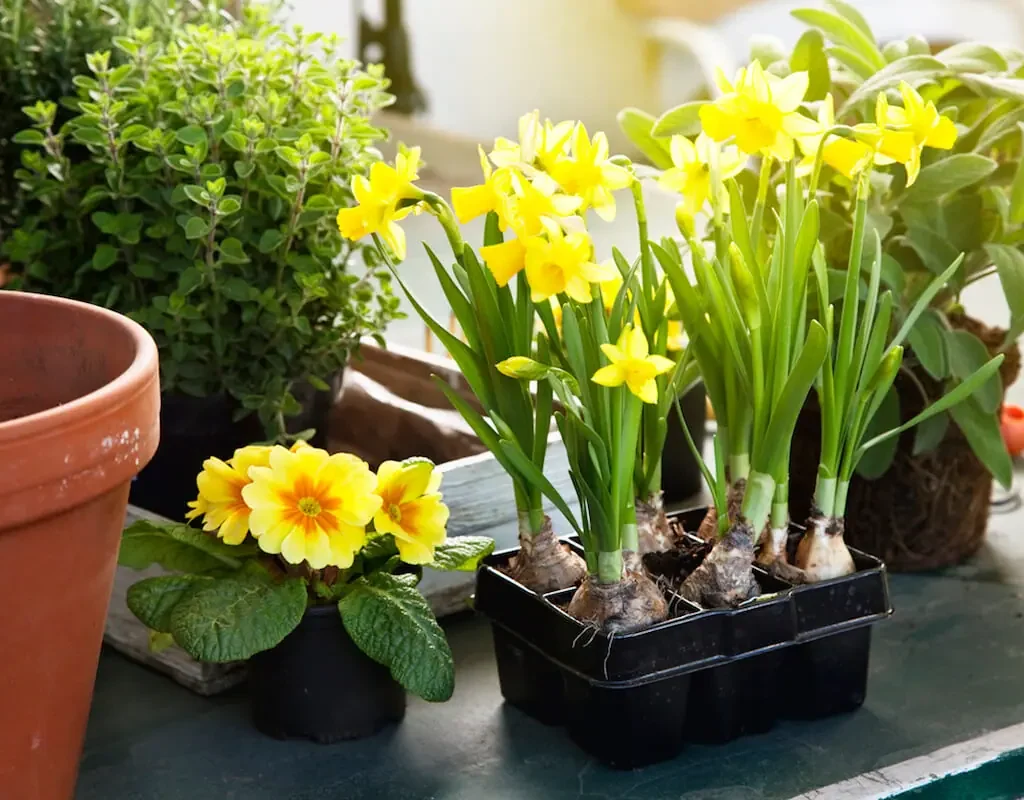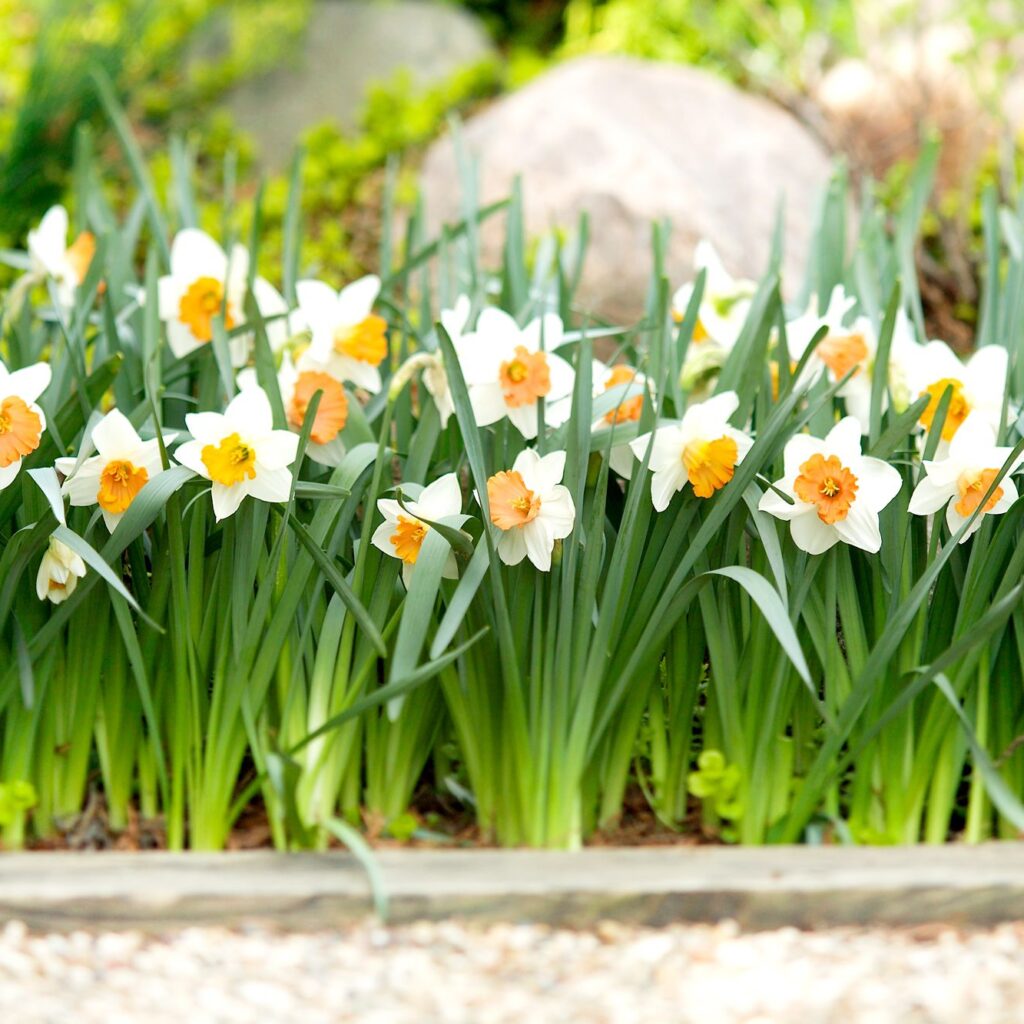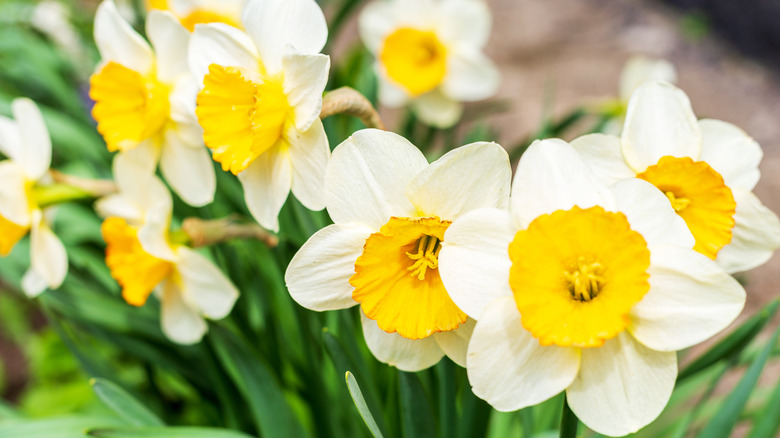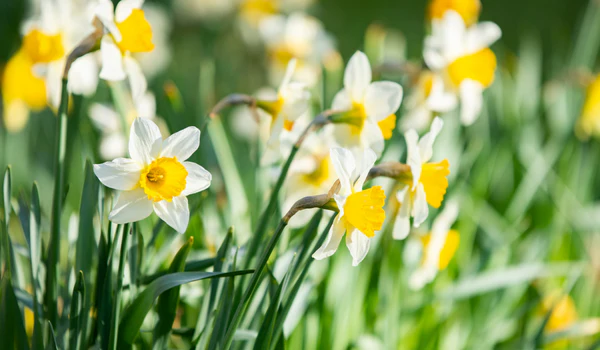Nothing says spring is here quite like the bright, cheerful blooms of daffodils. With their sunny yellow, white, or even peachy blossoms, daffodils are one of the easiest and most rewarding bulbs to grow. They brighten up gardens, walkways, and containers and often return year after year with little fuss.
Whether you’re a beginner gardener or simply looking to add reliable spring color to your yard, this complete guide will show you how to start growing daffodils — from choosing bulbs to planting, caring for them, and ensuring beautiful blooms for seasons to come.

Why Grow Daffodils?
Daffodils (Narcissus) are beloved worldwide for good reason:
- Easy to grow and low-maintenance.
- Return each year with minimal care.
- Deer, squirrel, and rodent-resistant.
- Thrive in both garden beds and containers.
- Offer a variety of colors, shapes, and sizes.
- Excellent for naturalizing (spreading over time in fields or lawns).
A single investment in daffodil bulbs will reward you with reliable blooms for many years.
Types of Daffodils to Grow
While most people picture classic yellow daffodils, there are actually over 50 species and thousands of cultivars. Here are some popular categories to consider:
Trumpet Daffodils
- Large flowers with a trumpet-shaped central corona.
- Typically bloom early in spring.
Example: ‘King Alfred’ (classic golden daffodil)

Large-Cupped Daffodils
- Big, showy flowers with large cups and contrasting petals.
- Mid-spring bloomers.
Example: ‘Ice Follies’ (white with pale yellow cup)
Small-Cupped Daffodils
- More delicate flowers with a shorter central cup.
- Mid to late spring.
Example: ‘Barrett Browning’ (white petals with orange cup)
Double Daffodils
- Full, frilly flowers with extra petals.
- Often fragrant.
Example: ‘Tahiti’ (yellow and red)
Miniature Daffodils
- Perfect for containers, rock gardens, or front borders.
Example: ‘Tête-à-Tête’ (tiny yellow blooms)

When to Plant Daffodil Bulbs
The best time to plant daffodil bulbs is in fall, typically 4 to 6 weeks before the ground freezes. In most regions, this means September to November.
Why fall?
Daffodil bulbs need a chilling period of several weeks to develop roots and prepare for spring blooming.
Where to Plant Daffodils
Daffodils thrive in a variety of locations as long as a few conditions are met:
- Full sun to partial shade (at least 6 hours of direct sun is ideal).
- Well-draining soil — daffodils hate soggy conditions.
- Garden beds, borders, beneath trees, along fences, or in containers.
Pro Tip:
Avoid planting bulbs in low-lying areas prone to waterlogging.
How to Plant Daffodil Bulbs
Here’s a simple step-by-step guide:
Step 1: Choose Quality Bulbs
Select firm, plump bulbs free from mold, soft spots, or shriveling. The bigger the bulb, the bigger the flower!
Step 2: Prepare the Planting Site
- Loosen soil to a depth of 8–12 inches.
- Mix in compost or organic matter to improve soil drainage and fertility.
Step 3: Plant the Bulbs
- Depth: Plant bulbs 2–3 times their height deep (typically 4–6 inches).
- Spacing: Leave 4–6 inches between each bulb.
- Position: Place bulbs with the pointy end up.
Pro Tip:
Group 6–12 bulbs together for a natural-looking, clustered effect.
Step 4: Water Well
Water thoroughly after planting to help settle the soil and encourage root growth.

Caring for Daffodils
Once planted, daffodils are incredibly easy to care for.
Watering
- Water after planting and during dry spells in fall and spring.
- Once established, they’re drought-tolerant but appreciate moisture during active growth.
Feeding
- Apply a low-nitrogen, high-potassium fertilizer when shoots appear in spring.
- Avoid over-fertilizing, which can lead to poor flowering.
Deadheading
- Remove faded blooms promptly to divert energy to the bulb, not seed production.
- Leave the foliage intact until it turns yellow and withers naturally (usually about 6 weeks after flowering).
Why?
The leaves feed the bulb for next year’s blooms.

Growing Daffodils in Containers
Daffodils perform wonderfully in pots and window boxes.
- Use a deep container with drainage holes.
- Plant bulbs close together but not touching.
- Water well after planting.
- Overwinter containers in a cold, sheltered spot.
- In spring, move them to a sunny location as shoots emerge.
Pro Tip:
Combine daffodils with other early spring bulbs like tulips and hyacinths for a stunning mixed container.
Common Daffodil Problems and Solutions
Daffodils are generally trouble-free, but here’s what to watch for:
| Problem | Cause | Solution |
|---|---|---|
| No blooms | Bulbs planted too shallow/deep, overcrowding, or poor soil | Replant at proper depth, divide overcrowded clumps |
| Faded flowers | Natural aging | Deadhead and let foliage die back |
| Bulbs rot | Poor drainage | Plant in well-drained soil or raised beds |
How to Naturalize Daffodils
Naturalizing means planting bulbs in a way that mimics nature — scattered throughout lawns, meadows, or under trees.
Tips for Naturalizing:
- Plant in groups of 6–12 or scatter randomly.
- Use a spade or bulb auger to dig holes of varying depths.
- Allow foliage to fade naturally before mowing.
Over time, your daffodils will multiply, creating a lovely, carefree display.

Propagating Daffodils
Daffodils multiply by forming offsets (baby bulbs) beside the main bulb.
How to Propagate:
- In late summer, after foliage dies back, carefully lift clumps.
- Separate the smaller bulbs from the parent bulb.
- Replant offsets at the same depth as mature bulbs.
It may take 2–3 years for offsets to produce flowers, but patience pays off with even more blooms.
Fun Facts About Daffodils
- Daffodils are toxic to deer, rabbits, and rodents, making them a great choice for wildlife-prone gardens.
- The Latin name Narcissus is linked to the Greek myth of Narcissus, a youth who fell in love with his own reflection.
- Daffodils symbolize new beginnings, hope, and renewal.
- In many countries, daffodils are worn to support cancer awareness charities.
Final Thoughts
Daffodils are a must-have for any gardener seeking early color, reliability, and carefree beauty. Their bright blooms are among the first to signal the end of winter, and with proper planting and simple care, they’ll reward you for years to come.
Whether planted in garden beds, naturalized across a lawn, or blooming brightly in a pot on your doorstep, daffodils promise to lift spirits and beautify your space each spring.





